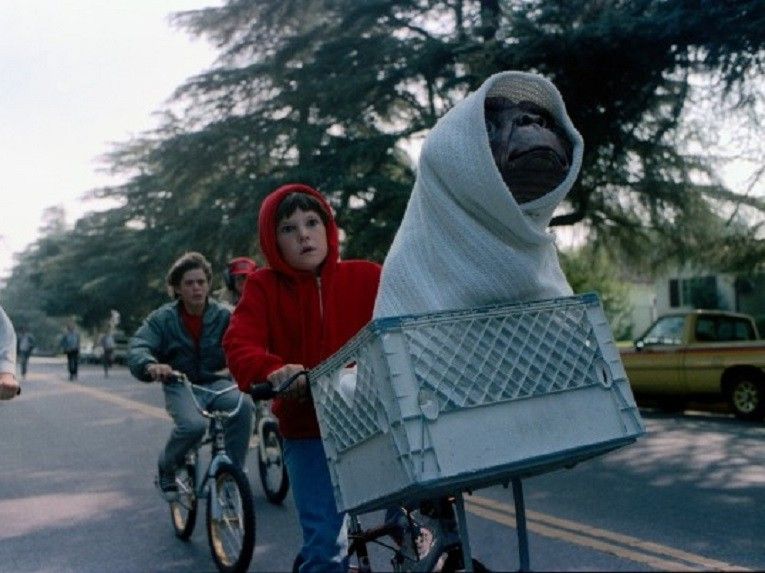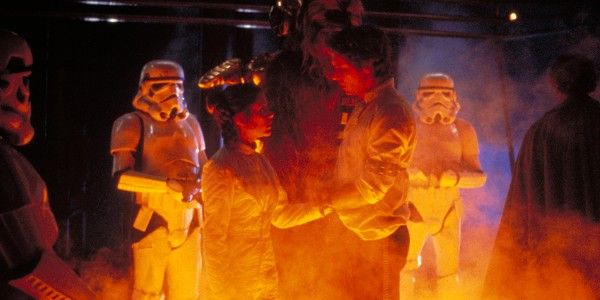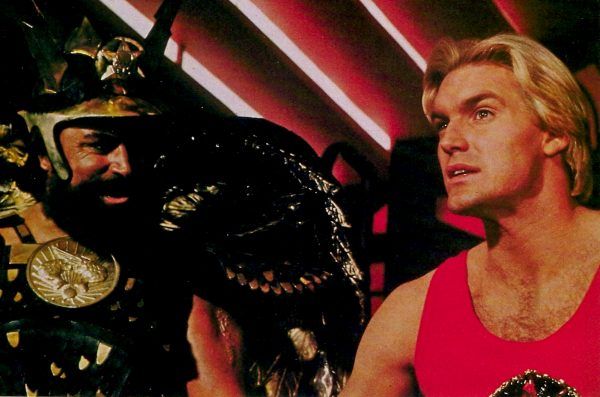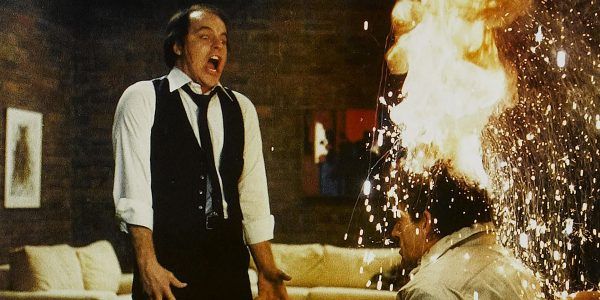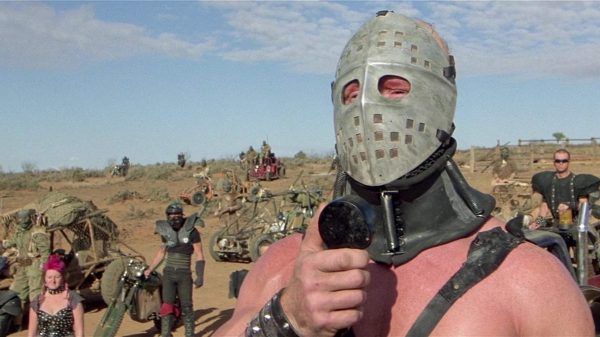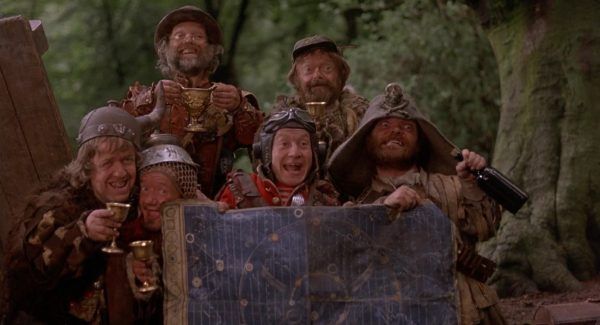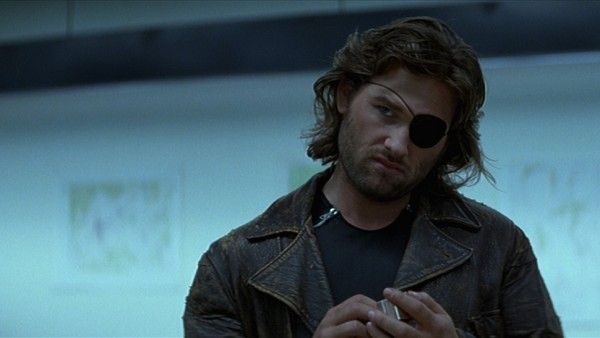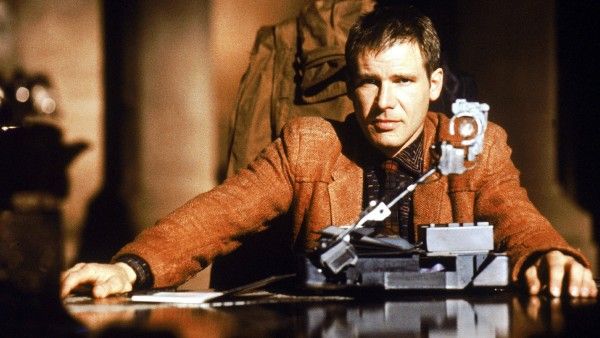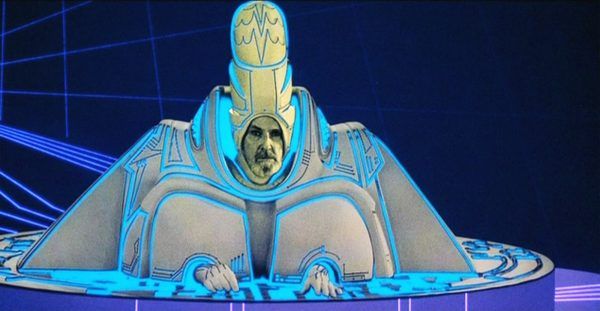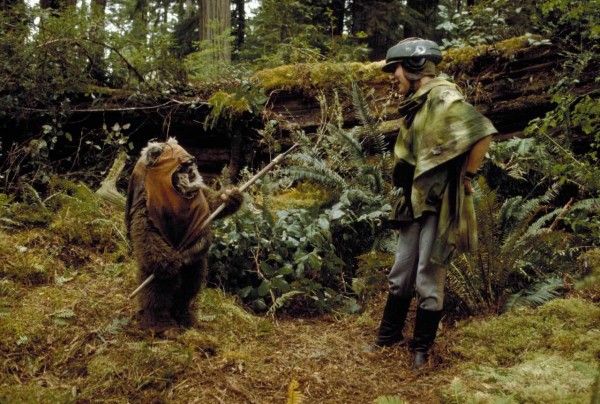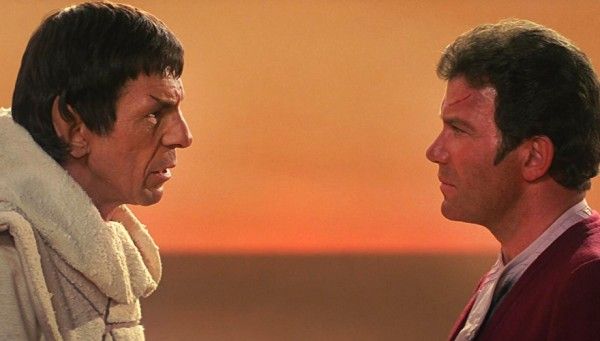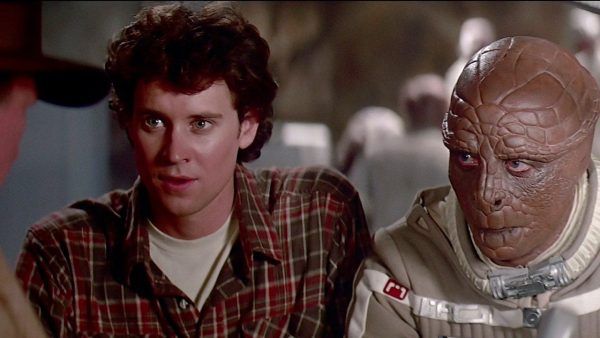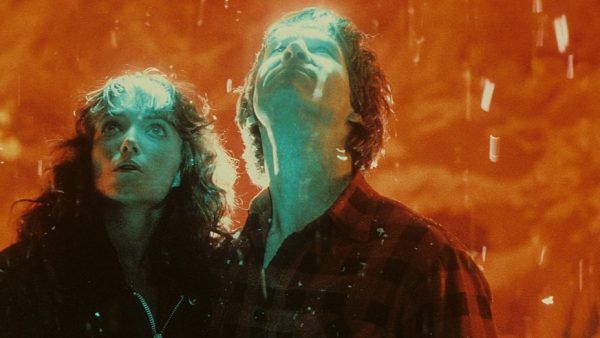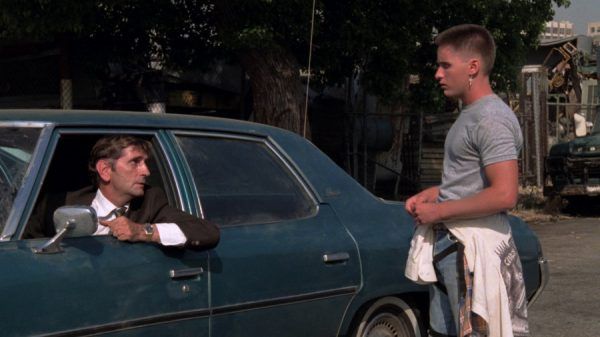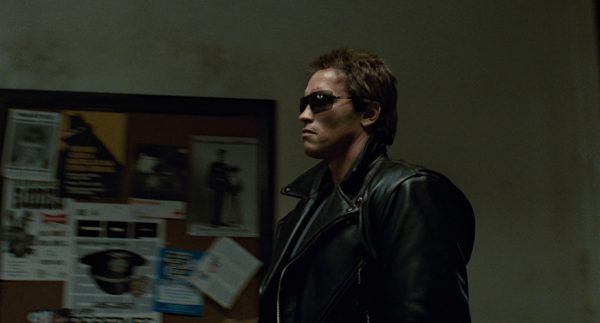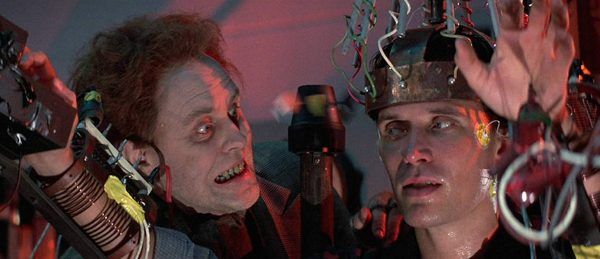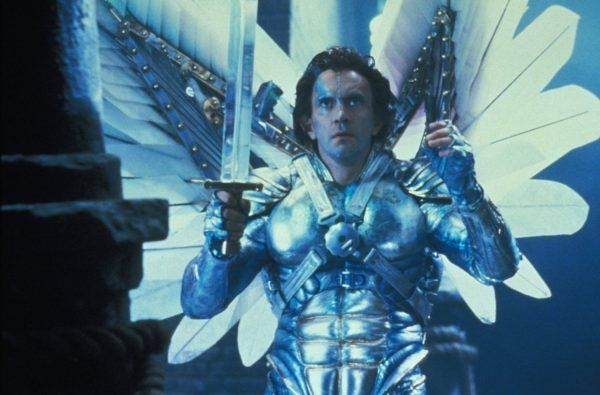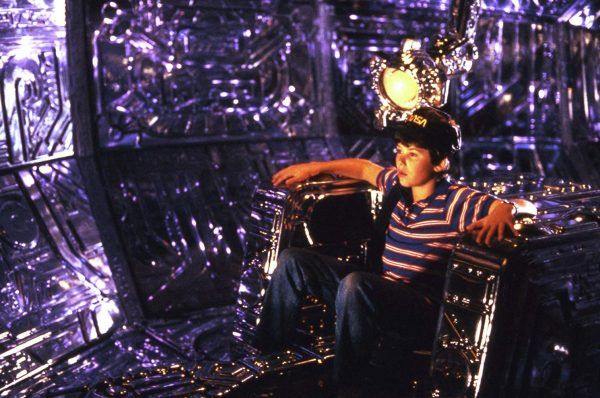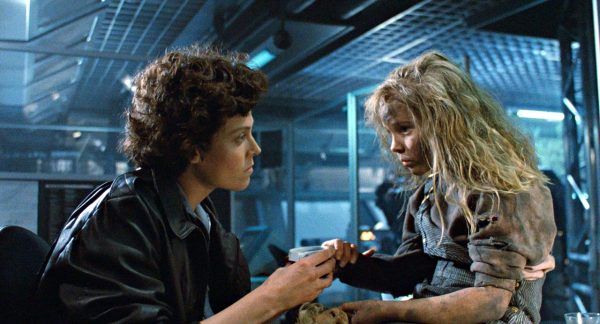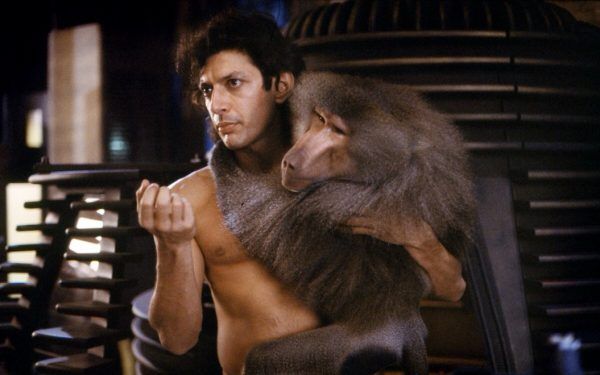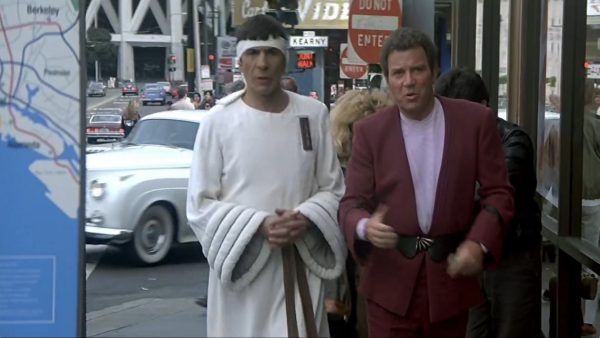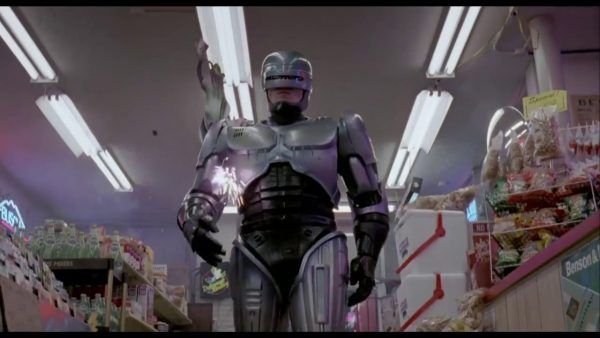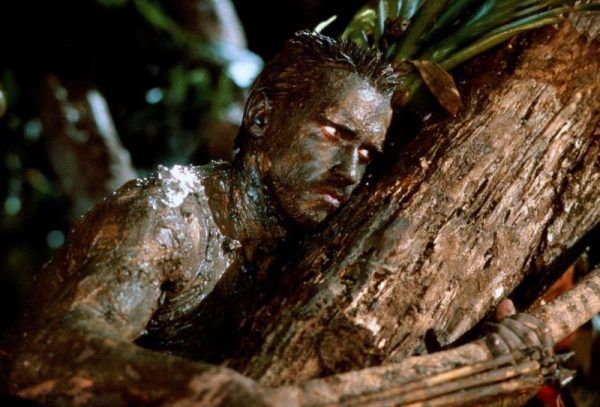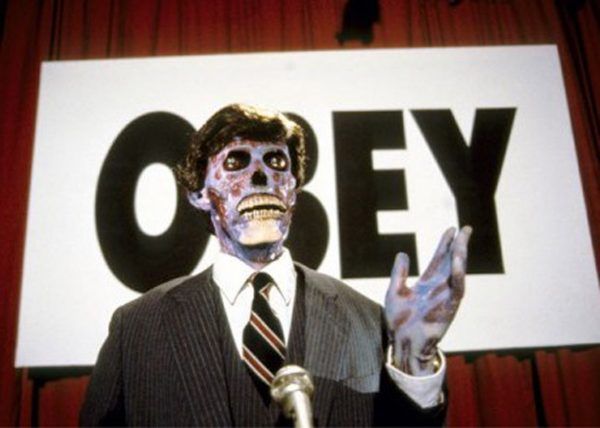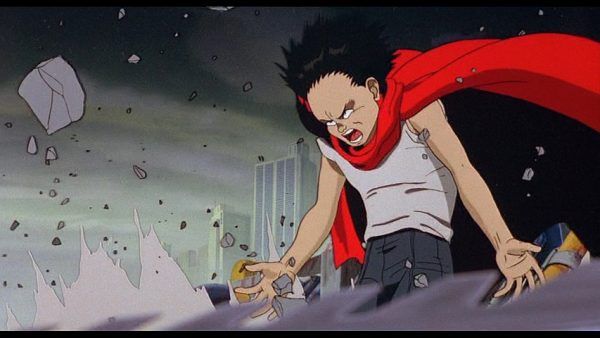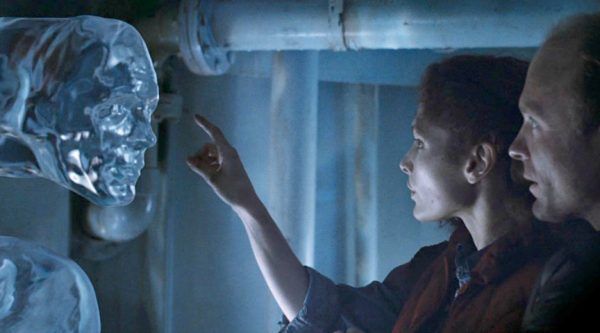In order of release year, here’s a look back at 30 great sci-fi movies from the 80s that fans kept talking about long after the credits rolled.
The Empire Strikes Back (1980)
No Star Wars movie since has come close to delivering such a complete and well-told story as Empire Strikes Back. Almost 40 years after its release, it is still the benchmark to which all entries in the franchise are measured -- thanks to such iconic moments as Han Solo frozen in carbonite and the whole “I am your father” thing.
Darth Vader further solidifies his place among the greatest movie villains and Luke further hones his skills as a Jedi. Irvin Kershner directs from a perfect script by Lawrence Kasdan (The Force Awakens) that humanizes these characters from that galaxy far, far away in ways that make them relatable and likable despite their world being full of lightsabers and tauntauns.
Flash Gordon (1980)
A cult-favorite that’s hard not to love, Flash Gordon is arguably the most ‘80s a movie can get without having been directed by the car from Knight Rider. Infused with a strong dose of intentional (we think?) camp and an epic soundtrack by Queen, Flash Gordon was truly an embodiment of its era.
Flash centers on one hunky football player being the only thing that stands between Earth and the evil Ming that wants to destroy it. This is what happens when the 80s tried to reboot a story from the 1930s. The dated special effects don’t hold up, but the weird, go-for-broke technicolor visual aesthetic does.
Scanners (1981)
Yup, this is the “exploding head” movie. And of course it’s from director David Cronenberg, Hollywood’s unofficial king of body horror. Based on his own script, about a group of individuals gifted (or cursed, depending on which side they are on) with telekinesis, Cronenberg excels here by building the world of Scanners so seamlessly into our own.
Grounding it in a very believable reality makes the film’s more extraordinary (and bloody) moments all the more powerful. Scanners is not mentioned as often as it should be among the director’s impressive list of credits, but it deserves to be a popular topic in that conversation.
The Road Warrior (1981)
Decades before Mad Max: Fury Road “shiny and chrome’d” audiences into submission, The Road Warrior served as visionary director George Miller’s best trip to the Wasteland. We wouldn’t have Fury Road with out this first Mad Max sequel and its commitment to in-camera action scenes and thrilling car chases -- especially that finale, which is one of the best chases ever in movie history. Miller creates a gritty world that is built on gas, bullets, and blood.
The lines between right and wrong have long-since been blurred for the law of survival at any cost -- and Max (Mel Gibson) is torn between self-perseverance and doing the right thing when he confronts a gang of terrifying, nothing-to-lose marauders. The only language they speak is violence, both Max and Miller are fluent in it. And the conversation they have with audiences is an adrenaline rush of set pieces that make Fast & Furious movies look like Driver’s Ed.
Time Bandits (1981)
Before director Terry Gilliam made his definitive time travel film, 12 Monkeys, he dipped a toe in the temporal mechanics with Time Bandits. Easily one of the polarizing filmmaker’s most entertaining films, this sci-fi fantasy finds an ordinary boy dragged across and through time by a (wait for it) band of eccentric dwarves.
The imaginative take on time travel here is only matched by the film’s sense of humor, making Time Bandits one of Gilliam’s few films aimed at a family audience. The movie is one of those underrated efforts that pops up on “most under-seen movies of the ‘80s” lists all the time, so best seek it out if you haven’t watched it already.
Escape From New York (1981)
Snake Plisskin is, hands-down, one of the genre’s most iconic and insanely popular anti-heroes. You’d think he had a whole franchise of films, but, nope, just two -- and the best of them is John Carpenter’s first foray into full sci-fi. (As befitting 2019, a reboot is in the works, with Saw's Leigh Whannell directing.)
Kurt Russell stars as Snake, the eye-patch sporting, camo-pants wearing gunslinger charged with going into the ruins of New York to rescue the President of the United States. It’s a crazy B-movie premise that Carpenter elevates with his no-frills, full-tilt execution of the material that gave audiences even more reasons to love Kurt Russell’s unique standing as a leading man.
E.T. (1982)
Steven Spielberg’s 1982 blockbuster is both one of the greatest movies ever made and the quintessential story about friendship and childhood -- all put through a very warm and inviting sci-fi lens. This seminal film only gets better with age -- especially when viewed during our more modern and troubled times.
This classic routinely vies for a spot in the director’s Top Five, if not taking that list’s No. 1 spot, given its contribution to pop-culture that still resonates today. That iconic John Williams score only bolsters its legacy.
Star Trek II: The Wrath of Khan (1982)
It's not a spoiler to say, more than 35 years after the film was released, that Wrath of Khan ends with Spock’s death. It was the torpedo-bay funeral heard 'round the world, one that director and uncredited co-writer Nicholas Meyer took very seriously and gave significant weight. Like Empire Strikes Back before it, this watershed film in the venerable series is the bar to which all Trek movies are measured against.
Not one of the franchise’s 13 films has ever surpassed it in quality (but some have come damn close). Khan’s vengeful hunt for the man that marooned him, Admiral Kirk (William Shatner), is a Run Silent, Run Deep affair as two starships stalk each other across the galaxy while a drama about friendship, getting older, death, and new life plays out within the hull of the Enterprise.
The Thing (1982)
The Summer of 1982 gifted us with this classic -- even though it was a box office disappointment thanks to everyone getting caught up in E.T. fever. (Who wants to watch a sci-fi horror monster movie about an alien that can turn into anything it sees and touches when you have the cute Mr. “Phone Home”?)
John Carpenter’s best film would ultimately find an audience and cement its legacy as one of the greatest sci-fi and horror movies ever. (Also, if there’s a better beard in the movies than the face suit Kurt Russell sports here, we don’t wanna know about it.)
Blade Runner (1982)
Ridley Scott’s rain-soaked and neon-lit classic changed the way we make movies, despite the film’s tepid response at the Summer 1982 box office. Visually and thematically rich, Blade Runner is a slow-burn film noir hiding out in a bleak sci-fi tale about identity and humanity.
No matter which cut of the seminal film you watch, it’s hard not to get lost in the landmark visual effects or the story of Harrison Ford’s Deckard -- an “ex-cop, ex-Blade Runner” charged with “retiring” advanced androids called Replicants. His search leads to the discovers that the machines being hunted are more human than the man gunning them down.
Tron (1982)
Disney’s Tron takes you inside the world of a very ‘80s videogame, one full of light cycles and identity discs, as Jeff Bridges’ computer engineer must defeat an 8-bit nemesis. The computer-generated effects dazzled and impressed many an audience upon the film’s initial release.
Those kids grew up to become adults who can appreciate the ‘80s visuals best through a very nostalgic lens. The world of Tron was one audiences had never seen before, and both it and the novel story are worthy of deeper exploration -- which Disney did with the expensive Tron: Legacy sequel.
Return of the Jedi (1983)
The original Star Wars trilogy ends with a literally bang, as Han, Luke, and Leia wrap up their epic conflict with the Empire… with help from the Ewoks. Yeah, that last part doesn’t hold up well now (and it didn’t really back then). But was does endure is Return of the Jedi’s awesome visual effects.
Standouts including ILM’s work with that spaceship chase inside the second Death Star and the battle between Rebel and Imperial ships leading up to it. Jedi is a fan-favorite that added many now-iconic characters (hi, Jabba!) to the mythos while also giving us a lightsaber battle for the ages between Jedi Knight Luke and his father, Darth Vader.
Star Trek III: The Search for Spock (1984)
Spock is resurrected in Leonard Nimoy’s feature directorial debut, which finds Admiral Kirk and his Enterprise crew hijacking their ship to save their friend from the volatile -- and off limits -- Genesis Planet. While not as emotionally stirring or exciting as its predecessor, Search for Spock is notable for its efficient story that delivers some of the franchise’s most iconic moments:
The gut-punch that is Kirk learning that the son he barely knows has been murdered by a Klingon and the explosion and death of Enterprise. This is one of the best threequels ever made, which is saying something considering how cursed the franchise’s odd-numbered installments are in terms of quality.
The Last Starfighter (1984)
Seth Rogen has made it no secret he really, really wants to remake this ‘80s-cable staple and we so wish he would. The Last Starfighter is that kind of movie that, when flipping channels or scrolling through streaming service watchlists, you’re drop everything and watch.
When Alex, a trailer park kid, earns the high score on an arcade game that serves as a recruitment for a Star Wars-type intergalactic conflict, he is whisked away to join the Star League to fight Zur and the Kodan Armada. The film is most notable for its early CG VFX, which are dated now but don’t get in the way of enjoying this earnest four-quadrant crowd-pleaser.
Starman (1984)
If Steven Spielberg and John Carpenter ever had a kid, it would be Starman. Eager to shake off the R-rated horrors he achieved with his remake of The Thing, Carpenter impressively tackled this sentimental, adult E.T. tale about an alien (the Oscar-nominated Jeff Bridges) that assumes the form of Karen Allen’s dead husband.
With government agents hot on this kind (but odd) extra-terrestrial tail, Allen must help him get back to his people -- and lose her husband all over again in the process. The bittersweet ending, backed by Jack Nitzsche’s stirring score, is one of the best moments in any Carpenter film.
Repo Man (1984)
This cult-favorite recently turned 35 this year, and its passionate fanbase still sing its deserved praises. Written and directed by Alex Cox, this low-budget sci-fi comedy follows a very ‘80s punk rock fan in Los Angeles, played by Emilio Estevez, who teams up with a veteran repo man (Harry Dean Stanton) to recover a mysterious car.
The closer they get to finding the vehicle, the more these two guys suspect it is not from this Earth. Or solar system. If you haven’t seen this one, to explain further about how this all plays out would rob you of experiencing it for yourself. Better watch it; its legion of fans can’t be wrong.
The Terminator (1984)
James Cameron’s script and direction are, fittingly, as efficient as his film’s titular killer. Cameron’s first sci-fi blockbuster made both him and his leading man, Arnold Schwarzenegger, stars. While every sequel but T2 have proven to be various degrees of forgettable, at least they don’t tarnish the legacy of the original -- which is one of those genre-defining game changers only a handful of filmmakers achieve.
Cameron managed to do it twice this decade (more on that later), and few would disagree with anyone’s claim that this lean classic -- about a cyborg from the future sent back to kill one Sarah Connor -- is the director’s masterpiece. This gritty, compelling story is also a standard-bearer in the pantheon of time travel movies.
The Adventures of Buckaroo Banzai Across the 8th Dimension (1984)
Cult movies don’t get much more cult-y than this under-appreciated 1984 film starring Peter Weller and Jeff Goldblum. Weller plays the titular Buckaroo Banzai, who leads his ragtag band of heroes in a struggle to defeat (and we’re not making this up) an evil alien force known as the Red Lectroids from Planet 10.
W.D. Richter directs with the proper amount of tongue-in-cheek the material deserves, delivering a movie that is both of its time and before it. The world building happening here is second to none. It also happens to feature a pre-The Big Easy Ellen Barkin and post-Footloose John Lithgow.
Back to the Future (1985)
When people speak of perfect movies, Back to the Future must be included among them. With a script written by Bob Gale and director Robert Zemeckis that clicks in place like safe tumblers, Back to the Future spins a lot of plates as it reaches back in time (with a DeLorean) Marty McFly and Doc Brown must work together in 1955 Hill Valley to ensure that Marty’s parents get together at the Enchantment Under the Sea Dance.
Or else 1985 Marty will cease to exist. The movie makes the time travel exposition very entertaining, avoiding info dumps in favor of explaining through action and character -- one of the many envious and entertaining aspects of this (no pun intended) timeless classic.
Brazil (1985)
Post his Monty Python days, director Terry Gilliam developed a reputation for shaping quirky and daring sci-fi stories. No other movie on the filmmaker’s resume best exemplifies his narrative and visual aesthetic than this under-appreciated classic. Brazil stars a never-better Jonathan Price as a disillusioned office worker daring to aspire for more in a very oppressive and bleak Orwellian future.
Equal parts steampunk dystopia and sci-fi drama, Brazil is a visual experience unlike any fans of the genre has ever seen before or since. It’s a borderline crime that more people don’t talk about this film or stage screenings of it at revival houses.
Flight of the Navigator (1986)
Oh, man, did ‘80s us love this movie so hard… Back in the good ol’ days when Disney made live-action fare that wasn’t remakes of its animated titles, the studio put out a time traveling space adventure aimed at the family audience. The story centers on young kid Joey Kramer, who encounters a T-1000 looking spaceship responsible for accidentally zapping the kid almost a decade into the future.
After escaping from a government facility that is studying him, the boy flees across the globe inside the alien craft. The ship’s A.I., voiced by Paul Rubens, provides the film with some of its funniest moments. And be on the lookout for a pre-Sex and the City Sarah Jessica Parker.
Aliens (1986)
Here’s James Cameron’s second ‘80s entry into the Greatest Sci-Fi Movies of All-Time Hall of Fame. After decades in cryo-sleep, Ellen Ripley awakens to find herself once again squaring off against acid-bleeding xenomorphs. When a human colony -- built on the site where Ripley first encountered the aliens -- goes offline, The Company sends in the Colonial Marines and their power loaders, which Ripley is forced to commandeer in an edge-of-your-seat finale versus the Alien Queen.
This sequence is one of the most fist-pumpingly satisfying climaxes in all of movie history, grounded by Sigourney Weaver’s Oscar-nominated performance as the tortured heroine struggling to protect Newt, the colony’s orphaned child she becomes a surrogate mother to in the face of creatures with mouths for tongues.
The Fly (1986)
“Be afraid. Be very afraid.” Blame The Fly for giving us that iconic line, along with a vintage Jeff Goldblum performance that remains to this day one of the actor’s crowning achievements. Director David Cronenberg elevates the film’s B-movie origins into a tragic, body horror cautionary tale and gory metaphor for the 1980s’ AIDS crisis.
Science and the consequences of breaking its laws literally transformer inventor Seth Brundle into a human fly; the more insect he becomes, the farther away from his humanity he feels -- and the more emotionally invested the audience gets in his plight, which culminates in a bloody, heartbreaking sequence that ranks among the best the director has ever crafted.
Star Trek IV: The Voyage Home (1986)
AKA “The One With the Whales,” Voyage Home was the most successful Star Trek movie at the box office at the time, thanks to this time-traveling comedy’s crossover appeal to both Trek fans and average moviegoers. Co-written by Wrath of Khan director Nicholas Meyer, Leonard Nimoy’s follow-up to Search for Spock caps off a trilogy that started with Khan with a movie that’s a brilliant mash-up of genres.
It’s a caper, a buddy comedy, and a sci-fi film with an environmental message -- built on the back of Kirk and his crew’s mission to save the future from an alien probe by going back in time to 20th Century San Francisco and finding the only thing the probe wants: Humpback Whales. Since the creatures are extinct in Trek’s future, Kirk must break the laws of physics to save the day and embark on a hilarious fish out of water adventure to do so.
RoboCop (1987)
Between RoboCop and Predator, 1987 was the year for bloody, R-rated action movies. No director truly embraced or redefined what that could look like on screen than Paul Verhoeven with this masterpiece. You know the story, it’s your classic tale of a futuristic Detroit cop (a star-making turn by Peter Weller) who gets shot up in the line of the duty.
...to the point where he must become half man, half machine, all cop to clean the city’s crime-drenched streets and find the very bad guys who “killed” him. A satirical action movie with lofty ideas hiding out behind all the gunfights and explosions, RoboCop is a tonally difficult balancing act that the director effortlessly pulls off. Skip the remake from a few years and rewatch the original.
Predator (1987)
Armed with a grenade launcher, muddy camouflage, and an endless supply of one-liners, Arnold Schwarzenegger found another action movie hit with the horror-infused Predator. As the leader of an elite unit of U.S. commandos, Arnold’s Dutch takes point on a mission deep into the jungles of South America where they find an invisible alien beast that collects human skulls for trophies.
Director John McTiernan stages the excessive muscles-on-muscles action in a way that borders on gun porn, but never veers into camp. He invests the proceedings with an urgency that gives the story real stakes, especially as the body count piles up the closer our heroes (all together now) “get to the chuppuh!” If you haven’t seen this ‘80s classic and master class of R-rated action cinema, we envy you. This is one first time we wish we could get back.
They Live (1988)
The decade was like Christmas for fans of John Carpenter’s unique, “don’t-give-a-fu**” style of filmmaking. Between 1982 and 1988, Carpenter delivered several of his best works -- including this cult-favorite that subverts the alien invasion genre. They Live’s sci-fi element gives cover for what Carpenter really wants to tell here: A story about gaslighting (more timely now than ever) and how the unsuspecting masses are one subliminal ad away from becoming sheep to our extra-terrestrial overlords hiding in plain sight.
The late wrestler Roddy Piper makes for a capable (and unlikely) action hero in the mold of Carpenter’s everyday, beer-and-blue-jeans type that he pioneered in Big Trouble In Little China. We can’t think of a better person, along with rival-turned-friend Keith David, that we’d want to watch this type of subversive sci-fi with.
Akira (1988)
This anime classic that became the stuff of college dorm viewing parties is essential viewing for both fans of the genre and excellent filmmaking in general. Akira is like the movie equivalent of one of Stefon’s clubs -- it has everything: Futuristic motorcycles, Neo-Tokyo biker gangs, post-apocalyptic cyberpunk visuals, secret government experimentation, and mutations (obviously).
A live-action Akira movie has struggled in Development Hell for years -- recently, Jordan Peele was once circling the project to direct, as was Thor: Ragnaok helmer Taika Waititi. Both have since left the project, sadly. But here’s hoping the 2019-set epic can gain some new momentum and become Hollywood’s next blockbuster.
Back to the Future Part II (1989)
Director Robert Zemeckis’ middle chapter of his Back to the Future trilogy is, narratively speaking, a bit of a convoluted mess. Gone are the clean, easy-to-follow storylines of Marty McFly’s first time traveling adventure; in their place, a timey-wimey trip back to 1985.
Marty is forced to embark on a side mission that plays out in the background of his original one. (Got all that?) What it lacks in story it more than makes up for with impressive use of visual effects that expand the world of this franchise. Also, who doesn’t love the hoverboards, Biff’s Almanac, and the self-lacing Nikes?!
The Abyss (1989)
James Cameron’s most underrated film is also his most emotionally gripping. The filmmaker often wears his heart on his considerable sleeves (see Titanic) to the point where the earnestness borders on schmaltzy. But not here. Somehow, The Abyss is a near-perfect mix of two things you wouldn’t think would go together: Underwater sci-fi adventure and romance.
After an American sub sinks following its encounter with an underwater alien entity, the crew of a deep sea oil rig are charged with finding the vessel and its nuclear payload as a terrible hurricane rages topside. Ed Harris gives a career all-timer performance as the leader of these oil workers and one half of the estranged married couple that finds more than they bargained in the darkest hole in the ocean.

